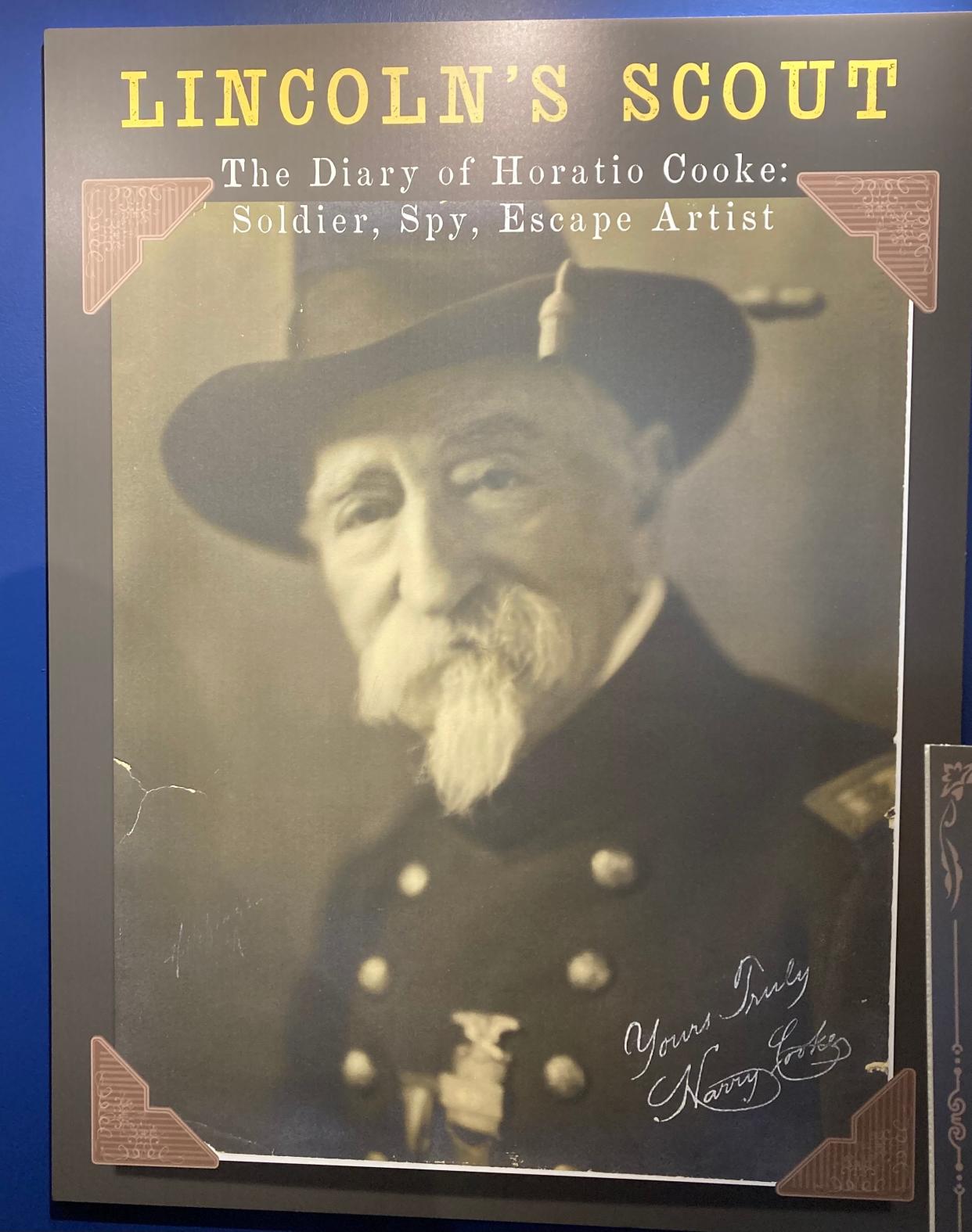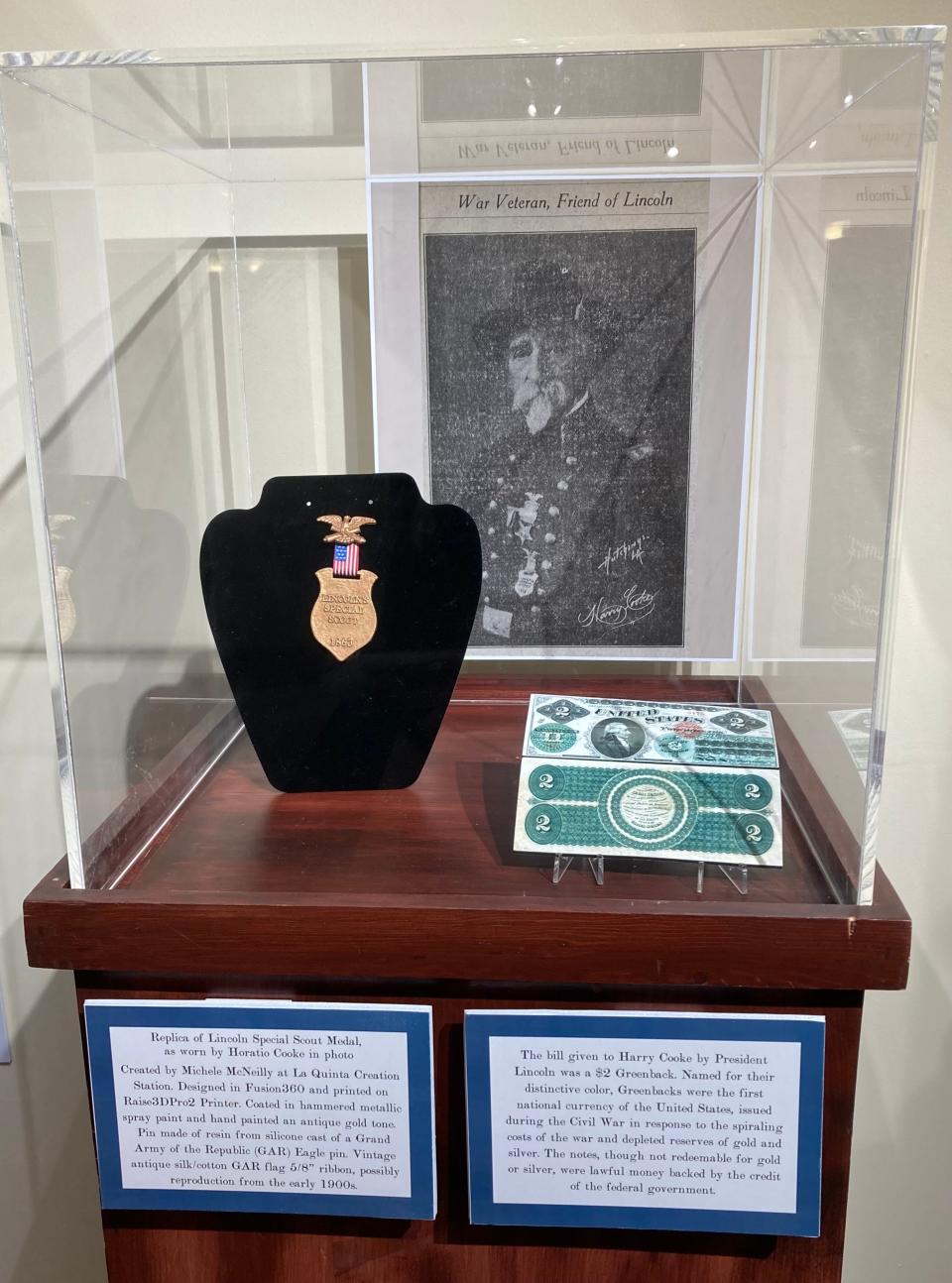Tale of magician, spy, Lincoln's Scout on display at La Quinta Museum

- Oops!Something went wrong.Please try again later.
All seemed to be going well during M. R. Cannon's magic show in 1981 in nearby Yucaipa until things took an extraordinary turn − sans magic.
Cannon was looking for someone who could tie a knot as part of a trick. An 85-year-old audience member, Clara Louise Wasem, volunteered. Soon enough, she ended up taking over the show by not only telling the audience that she once volunteered for performer Harry Houdini, but also with tales of her multi-hyphenated father, Professor Horatio "Harry" G. Cooke. Nicknamed "Lincoln's wizard," he was a Special Scout for President Abraham Lincoln, an escape artist, spiritualism debunker and a mentor and friend to Houdini.
The story Wasem recounted about her father seemed straight out of a movie, and she always felt it was worthy enough to be shared with readers. So, she gave Cannon her father's detailed diary and scrapbook and tasked him with sharing his story. It took a couple of decades, but the book "Lincoln's Scout: The Diary of Horatio Cooke Soldier, Spy, Escape Artist" hit bookshelves last year.
A piece of the story has also come alive in the Coachella Valley. Cooke's work and possessions are on display at the La Quinta Museum's "Lincoln’s Scout: The Diary of Horatio Cooke: Soldier, Spy, Escape Artist" exhibit. It will be available for viewing through Dec. 31.
Museum Director Sharla Fox said Cooke told a part-Civil War, part-magic story in his diary.
"(Lincoln) loved magic. He heard that this kid could do rope escapes, and he wanted to see it," she said.
During a meeting with the president, Cooke was tied up by two generals and a senator with 50 feet of clothesline and asked Lincoln to walk 10 feet away, the exhibit explained. In that short amount of time, Cooke managed to free himself and shook the president's hand. Delighted, President Lincoln rewarded Cooke with a $2 "Greenback" (the first national currency of the United States issued during the Civil War) and told him to "keep it always to remember Uncle Abe by."
Cooke became captain of the Lincoln Special Scouts, the elite secret scout and spy entity formed two years before the U.S. Secret Service and assigned the most dangerous missions during the Civil War. Cooke's escape skills came in good use when he and his fellow scouts were captured in 1864 in the Virginia woods by Mosby's Raiders, a battalion of partisan cavalry considered by the Union to be "guerillas." The group was led by John S. Mosby, and members were known for their fast raids and ability to elude pursuits. But they were no match for Cooke's sneaky hands, which helped himself and others escape.
The exhibit also dives into spiritualism in the post-Civil War era. "Mediums" would perform séances that often featured levitating tables, seemingly evidence of communicating with departed souls. The art of escape also evolved from the era, but Cooke became one of the first debunkers of the mediums and their "skills."
Snippets from Cooke's scrapbook, which highlight his performing and personal career, are included in the exhibit, as well as correspondence from Houdini. The museum also recreated the Special Scout metal that Cooke wore.

"The author guesses that he was probably buried with it," Fox said of the whereabouts of the real metal. "He was super proud of that, and well into his life he would make appearances in his uniform with his metal on."
After Cannon copied down notes from Cooke's diary, he returned it to Wasem. However, following her death, its current location is unknown. As Cooke's story is shared more, the author is hoping that it resurfaces if someone has it in their possession, Fox said.
The exhibit is also a testament to the power of storytelling and keeping history alive.
"You could just come across such an incredible life story that could have been lost. Clara Louise had a son, but he passed away, so there was no one to preserve it," Fox said. "It's amazing that she decided that this 20-something-year-old magician was the guy, and she chose well because it became one of his lifetime pursuits to honor her request."
Coming in January, the La Quinta Museum will feature the exhibits "In the Fields of the North" about migrant farm work, and one on Dorothy Arzner, a La Quinta resident and one of the first female Hollywood directors whose career spanned the silent era of the 1920s into the early 1940s.
The museum also showcases the region's history and cultural arts with a diorama of a Cahuilla Indian village and one with native animals, as well as photos and items from the area's early resorts. The community room also has a 32-foot-long mural of La Quinta highlights painted by André Blanché.
If you goWhat: "Lincoln’s Scout: Diary of Horatio Cooke, Soldier, Spy, Escape Artist" exhibitWhen: Through Dec. 31Where: La Quinta Museum, 77-885 Avenida Montezuma, La QuintaHow much: FreeMore information: https://www.playinlaquinta.com/arts-culture/la-quinta-museum/#exhibits
Ema Sasic covers entertainment and health in the Coachella Valley. Reach her at ema.sasic@desertsun.com or on Twitter @ema_sasic.
This article originally appeared on Palm Springs Desert Sun: La Quinta Museum exhibit tells story of Lincoln Scout Harry Cooke

